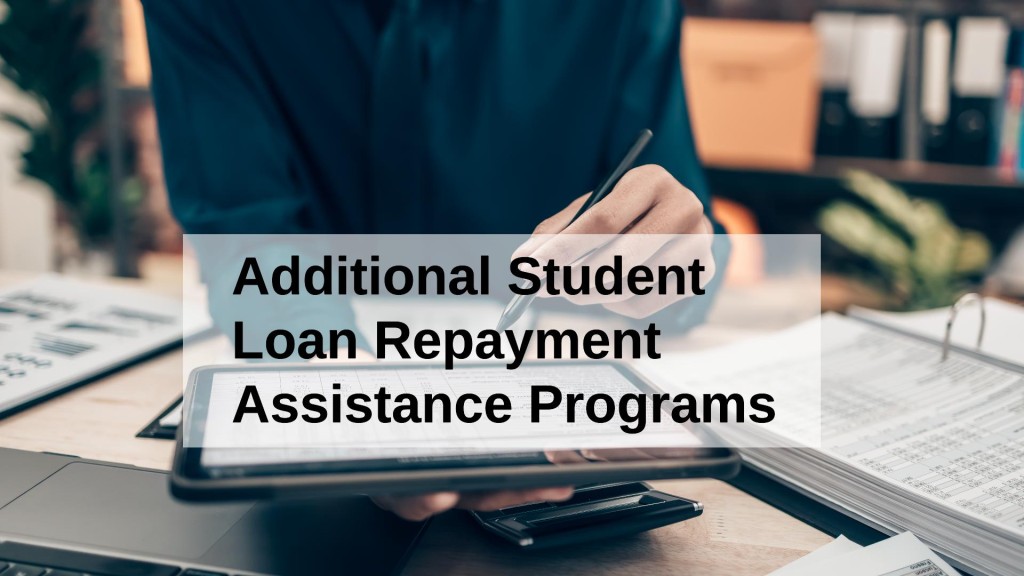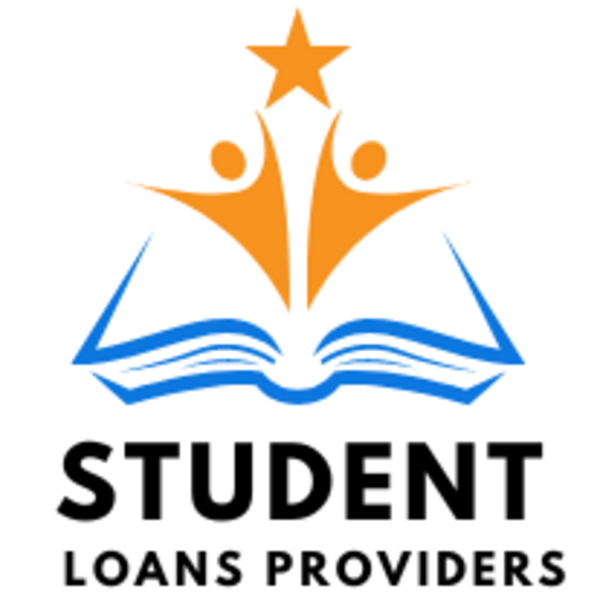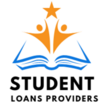Survivors’ and Dependents’ Educational Assistance Program
Explore educational assistance for survivors and dependents. Learn about benefits, eligibility, and how to apply for this valuable program

Discover additional student loan repayment assistance programs to ease your financial burden. Explore options beyond traditional repayment plans.
Student loan debt has become a pervasive issue, impacting individuals across various professions. For many, the burden of student loans can be overwhelming, leading to a search for solutions beyond traditional loan forgiveness programs. In this guide, we'll explore additional student loan repayment assistance programs, offering a comprehensive overview of the options available to borrowers seeking relief.
Table of contents [Show]
While loan forgiveness programs are well-known, there are alternative pathways to alleviate the financial strain of student loans. Student loan repayment assistance programs provide assistance through various means, such as employer-sponsored initiatives, state-funded programs, and industry-specific incentives. These programs aim to support borrowers in managing their loan obligations and achieving financial stability.
The rising cost of education has contributed to a surge in student loan debt, prompting a need for diverse repayment assistance programs. Recognizing this, both public and private entities have developed initiatives to address the challenges faced by borrowers. Understanding the landscape of these programs can empower individuals to make informed decisions about their financial future.
Many employers recognize the financial strain faced by employees with student loans and are taking steps to provide support. Employer-sponsored repayment assistance programs involve companies offering financial contributions towards employees' student loan payments. This benefit can significantly reduce the financial burden for employees while enhancing the company's attractiveness to potential hires.
Several states have implemented their own student loan repayment assistance programs to address the unique needs of their residents. These programs may offer grants, subsidies, or loan forgiveness options for individuals working in specific professions or underserved areas within the state. State-funded initiatives aim to retain skilled professionals and bolster critical sectors of the workforce.
Certain industries, recognizing the importance of attracting and retaining talented professionals, have established industry-specific loan repayment incentives. This may include fields such as healthcare, education, and public service. Professionals working in these sectors may be eligible for specialized repayment assistance programs tailored to their industry's needs.
Various nonprofit organizations are dedicated to supporting individuals burdened by student loan debt. These organizations often provide financial counseling, resources, and, in some cases, direct financial assistance to help borrowers manage their loans more effectively. Exploring the offerings of these nonprofits can be a valuable step for individuals seeking additional support.
Community organizations, local foundations, and grassroots initiatives also play a role in addressing student loan debt at the grassroots level. These initiatives may include workshops, seminars, and community-driven campaigns to raise awareness about available resources and support systems. Engaging with such initiatives can create a network of support for borrowers within local communities.
In the digital age, technology is increasingly being leveraged to address the student loan crisis. Innovative tech solutions, such as apps and platforms, offer tools for borrowers to manage and optimize their student loan repayment strategies. These solutions may include budgeting assistance, loan optimization algorithms, and personalized financial planning.
Entrepreneurs and small business owners facing student loan debt challenges can explore specialized repayment assistance programs tailored to their needs. These programs may include grants, low-interest loans, or resources specifically designed to support entrepreneurial ventures while managing student loan obligations.
Recognizing the importance of affordable education, some community colleges have implemented initiatives to reduce the financial burden on students. These initiatives may include low-cost tuition options, scholarships, or partnerships with employers to offer tuition reimbursement or loan repayment assistance for graduates entering the workforce.
While the student loan landscape varies globally, some countries have implemented innovative approaches to support borrowers. Exploring international models can provide insights into alternative strategies for managing student loan debt and inform discussions on potential improvements to existing programs.
Each repayment assistance program comes with its own application process and eligibility criteria. Navigating this landscape can be complex, but understanding the steps involved and preparing necessary documentation is crucial for success. This section will guide borrowers through the application process, offering tips and insights to enhance their chances of securing assistance.
Real-life success stories can provide inspiration and guidance for individuals navigating the student loan repayment journey. Highlighting individuals who have successfully utilized additional repayment assistance programs will illustrate the tangible impact these initiatives can have on borrowers' lives.
While these programs offer valuable support, they are not without challenges and criticisms. This section will delve into potential drawbacks, including limited funding, eligibility restrictions, and the need for broader systemic changes to address the root causes of student loan debt.
Drawing a comparison between traditional loan forgiveness programs and additional repayment assistance initiatives will help borrowers evaluate the most suitable option for their unique circumstances. Understanding the differences in benefits, eligibility criteria, and long-term implications is essential for making informed decisions.
Beyond individual benefits, additional repayment assistance programs can have a broader economic impact. By supporting borrowers in managing their student loan debt, these programs contribute to overall financial stability, increased consumer spending, and a more resilient workforce.
Navigating the myriad options for student loan repayment assistance can be overwhelming. This section will provide practical advice for borrowers, including researching available programs, assessing personal financial goals, and seeking guidance from financial advisors.
As the landscape of student loans continues to evolve, anticipating future trends in repayment assistance programs is crucial. This section will explore potential developments, such as increased employer involvement, expanded state initiatives, and technological innovations shaping the future of student loan repayment.
In conclusion, the realm of student loan repayment assistance extends far beyond traditional forgiveness programs. By exploring a diverse range of initiatives, borrowers can discover tailored solutions that align with their unique financial circumstances and career aspirations. Whether through employer support, state-funded programs, or innovative tech solutions, these additional options empower individuals to take control of their student loan journey and build a more secure financial future.
What is military student loan forgiveness?
Military student loan forgiveness refers to programs designed to forgive or reduce student loan debt for individuals who have served in the military.
Who qualifies for military student loan forgiveness?
Qualifications vary depending on the specific program, but generally, individuals who have served in the military, including active duty, reserves, and veterans, may be eligible.
What types of loans are eligible for military student loan forgiveness?
Eligibility can vary, but typically federal student loans, such as Stafford loans, Perkins loans, and Direct loans, are eligible for military student loan forgiveness.
Do private loans qualify for military student loan forgiveness?
Generally, private loans do not qualify for military student loan forgiveness programs, but it's essential to check specific program requirements.
How much of my student loans can be forgiven through military service?
The amount forgiven can vary widely depending on the program and individual circumstances. Some programs may forgive a percentage of the loan balance, while others may forgive the entire amount.
Is there a minimum service requirement for military student loan forgiveness?
Yes, most programs require a minimum service commitment, which can range from a few years to several years of active duty or reserve service.
Can officers qualify for military student loan forgiveness?
Yes, officers are generally eligible for military student loan forgiveness programs, although eligibility criteria may differ from enlisted personnel.
What are some examples of military student loan forgiveness programs?
Examples include the Public Service Loan Forgiveness (PSLF) program, the National Defense Student Loan Discharge (NDSLD) program, and various branch-specific loan repayment programs.
Can I combine military student loan forgiveness with other loan forgiveness programs?
In some cases, yes, but it's essential to understand the rules and limitations of each program before attempting to combine them.
Do I need to apply for military student loan forgiveness, or is it automatic?
It depends on the program. Some forgiveness programs require an application, while others may be automatic based on meeting eligibility criteria.
Can I transfer my military student loan forgiveness benefits to family members?
Generally, no. Military student loan forgiveness benefits are typically not transferable to family members.
What happens if I leave the military before fulfilling my service obligation for loan forgiveness?
If you leave the military before fulfilling your service obligation, you may lose eligibility for loan forgiveness unless you qualify for specific exemptions or waivers.
Do I have to be deployed to qualify for military student loan forgiveness?
Deployment is not always a requirement for military student loan forgiveness, but it can impact eligibility for certain programs.
Can I use military student loan forgiveness for graduate or professional school loans?
In some cases, yes, but eligibility may vary depending on the program and the types of loans involved.
Are there tax implications for military student loan forgiveness?
Generally, forgiven loan amounts may be considered taxable income, but there are exceptions for certain types of forgiveness programs, especially for service-related forgiveness.
Explore educational assistance for survivors and dependents. Learn about benefits, eligibility, and how to apply for this valuable program
Discover the benefits of the Montgomery GI Bill for military service members. Get education and training assistance. Learn more now
Unlock your future with the Post 9/11 GI Bill. Get education benefits for veterans. Pursue your dreams with tuition, housing, and more covered

